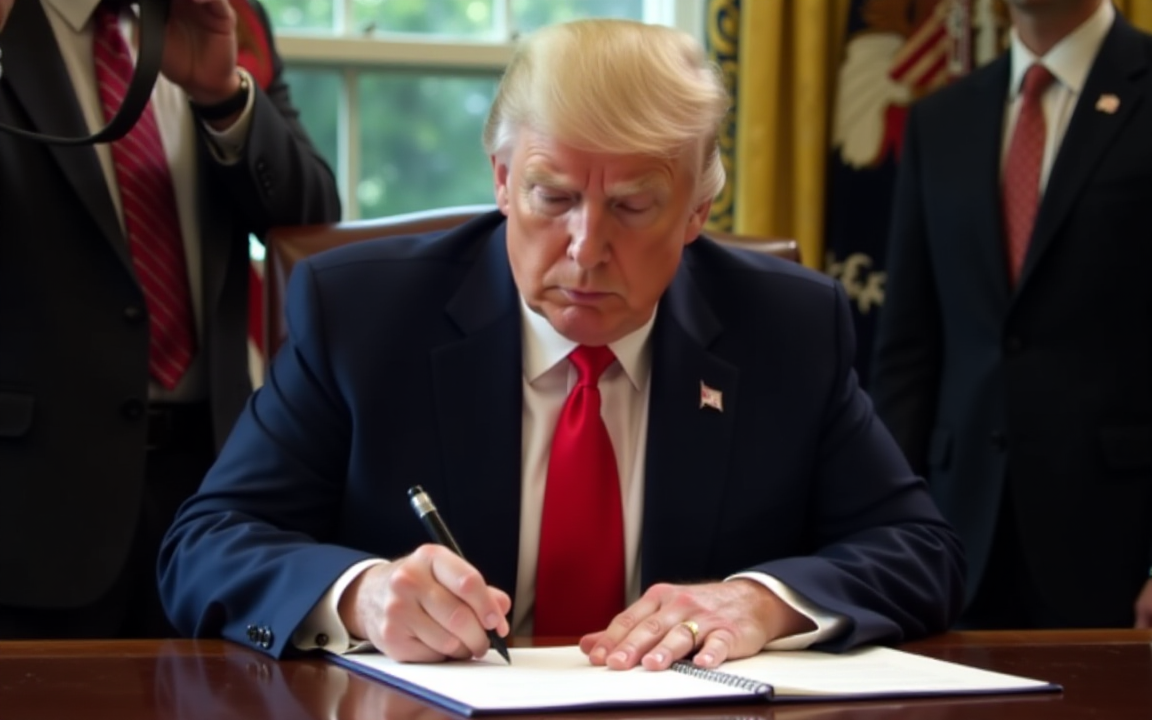US President Donald Trump’s new blanket tariffs are scheduled to take effect on August 1, a move that experts warn could lead to increased prices on various food items for American consumers, according to a CNBC report.
These tariffs, which are essentially taxes on imported goods, are designed to protect domestic industries by making foreign products more expensive.
However, the ripple effect of such policies often extends to the consumer, who ultimately bears the brunt of these added costs.
The impending tariffs are expected to impact a wide range of imported foods, from fresh produce and seafood to processed goods and speciality items.
For example, if tariffs are placed on imported fruits and vegetables, grocery stores that rely on these international sources may have to raise their prices to offset the increased import costs.
This could mean higher prices for staples like avocados, berries, and certain types of fish, which are frequently sourced from other countries.
Economists and trade analysts are closely monitoring the situation, anticipating potential shifts in consumer purchasing habits and supply chain dynamics.
Retailers may explore alternative domestic suppliers, but this can be a complex and time-consuming process, especially for products that are not readily available or produced in sufficient quantities within the US.
Furthermore, even if domestic alternatives are found, the initial transition period could still see price fluctuations as the market adjusts to the new trade landscape.
Consumers may prefer premium products
Trump’s tariffs aim to boost demand for American goods.
However, some products, like Brazilian coffee, are not domestically produced.
Other imports, such as bananas, have limited US production that would not satisfy American demand, as per a Tax Foundation analysis released Monday.
According to Tax Foundation senior economist Alex Durante, some US consumers might opt to pay a premium for imported food items instead of selecting alternative products.
US food product imports in 2024 were approximately $221 billion.
While most of these products are already subject to tariffs between 10% and 30%, the Tax Foundation noted that some countries could face levies exceeding 30% if Trump’s August 1 tariffs are implemented.
“We could see some large movements in prices over the next few months if the administration holds firm to that Aug. 1 deadline,” Durante was quoted in the report.
Top items at risk
According to an analysis by the Tax Foundation, the top five imported items by volume that may be subject to tariffs are liqueurs and spirits, baked goods, coffee, fish, and beer.
These items collectively represent approximately 21% of total US food imports.
According to June’s US inflation report, grocery prices have increased by approximately 2.4% compared to last year.
However, experts note that the complete effect of Trump’s tariffs has yet to be observed.
Durante said:
It’s way too soon for the administration to be doing a victory lap because most of their planned tariff increases have not gone into effect yet.
Short-term rise in costs
A separate study by The Budget Lab at Yale, released on Monday, predicts that current tariff price increases will lead to a short-term rise of 3.4% in food costs, with prices remaining 2.9% higher in the long run.
The analysis also suggests that fresh produce could initially see a 6.9% increase in price, eventually stabilising at 3.6% higher.
“The Administration has consistently maintained that the cost of tariffs will be borne by foreign exporters who rely on access to the American economy, the world’s biggest and best consumer market,” White House spokesperson Kush Desai told CNBC.
Desai presented a July analysis from the White House’s Council of Economic Advisers.
This analysis indicated that the personal consumption expenditure price index, which measures the prices of imported goods, experienced a decline from December to May.
The post Consumers brace for higher grocery bills as Trump’s tariffs loom appeared first on Invezz

